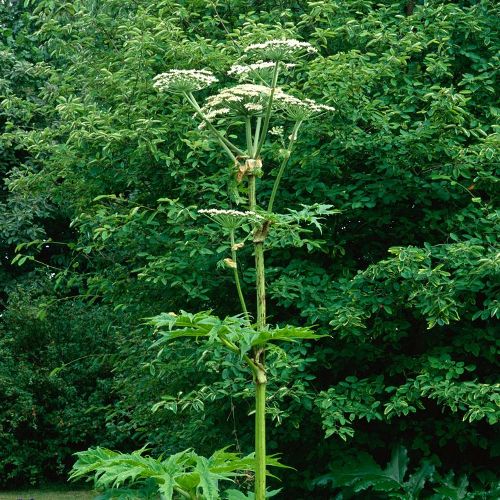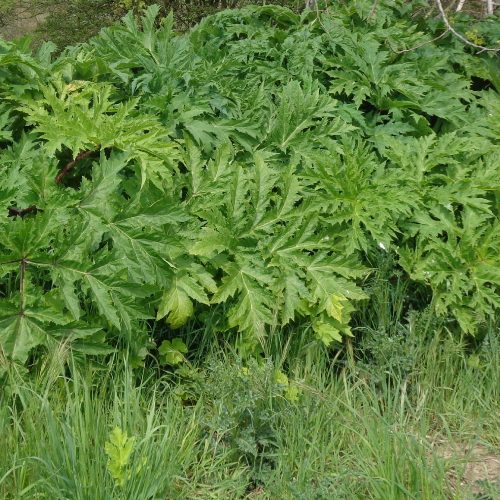
Giant Hogweed
Animal Safety: Dogs: No Cats: No Rabbits: No
This is a plant for both animals and humans to avoid.
Free Grazing: No
Lifespan: Various
Soil Type: Prefers moist soil but can grow anywhere
Life cycle:
Seeds germinate the year after they have been shed from the plant. They start to emerge between January and June, with April being the peak emergence period.
In the first couple of years the plant focuses on spreading out and developing its broad leaves which kills of other surrounding vegetation. Each winter it dies back and re grows the following year.
In the second, third or fourth year, when it had managed to gain enough room from killing off surrounding plants and deep enough root soil, it focuses on growing huge flat topped flower heads on a hollow stem up to 4 m tall.
The actual plant only lives until it flowers, which can take up to four years, then it dies off.
A single flower head may hold as much as 5,000 seeds. Which means a whole plant may be able to produce between 50,000 and 80,000 seeds. These seeds are dispersed by the wind, rivers and wildlife.
Seeds can remain in the soil and still be viable for up to 15 years. If you chop down a plant that has not flowered but do not get rid of all of the roots, it could re grow and still flower.
Dangers to animals and humans:
The sap of giant hogweed can cause burns as it contains furocoumarin, which makes skin extremely sensitive to sunlight (phytophotodermatitis). If the sap gets onto your skin, then you are exposed to sun, your skin can blister badly and blistering can recur over months and even years. This is known as phytotoxicity.
So familiarise yourself with what the plants look like and try to avoid it.



